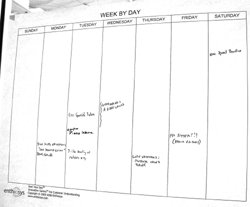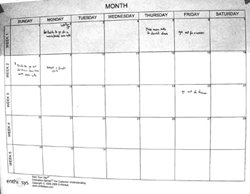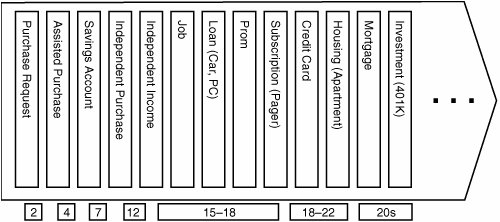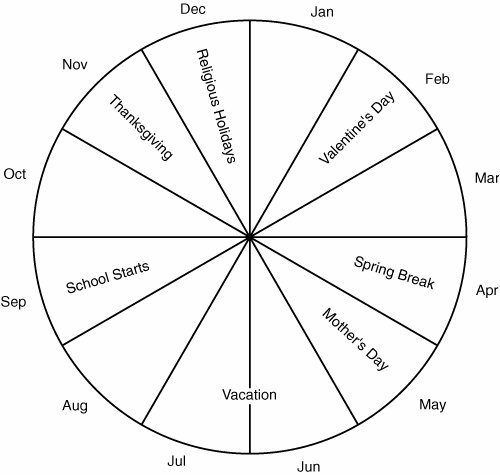Playing the Game
Preparing for the GameSelecting the customers who will produce the best results is a common theme throughout the book. In this game, it helps to consider how different customers may be affected by time and then select customers who fit different time profiles. For example, if you're interested in how school schedules impact a parent's use of your product, you may want to include parents who send their children to public schools, parents who send their children to private schools, parents who home school their children, and parents who employ tutors or nannies. Each of these schooling options creates different time demands on parents. This also means that you must focus your efforts on producing calendars that are specific to the question you're asking. If you're asking customers about their child care needs, you might find that a poster of the school year is the most useful representation of time. If you're asking about their use of athletic gear, you need to match the calendars to the sport. Make certain that you also hang several blank sheets of paper. Although our use of a product or service is influenced by time, it is also influenced by events. By allowing your customers to record and share key events that motivate or adjust their use of your product, you'll gain greater, richer understanding into their underlying needs. Give each participant a different colored pen so that you can keep track of which customer made what comment on the posters. If you have more than one person from the same company or family participating, consider giving each of them different colored pens so that you can track each person's contributions. Give customers a simple way to agree with what other customers say they do with your products. My favorite approach for signaling agreement is to let customers place a brightly colored sticker, such as a gold star or a word like "Yeah" or "Excellent," next to something that someone else has written. Stickers keep the mood fun, and the different words that customers choose provide you with additional opportunities to ask them specific questions regarding why they chose that particular word to signify agreement. Materials
Figure 2.14. Week-by-Day Calendar Figure 2.15. Monthly Calendar
|
EAN: 2147483647
Pages: 144
- Structures, Processes and Relational Mechanisms for IT Governance
- Measuring and Managing E-Business Initiatives Through the Balanced Scorecard
- Measuring ROI in E-Commerce Applications: Analysis to Action
- Technical Issues Related to IT Governance Tactics: Product Metrics, Measurements and Process Control
- Managing IT Functions

